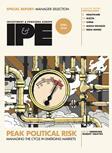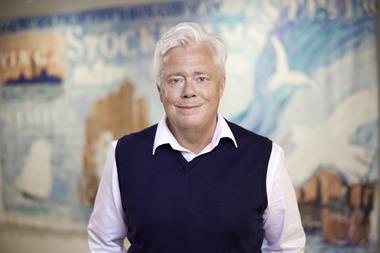The Stockholm-based Länsförsäkringar Liv Försäkrings (LF), the life insurance and pensions company with some 850,000 active members and retirees, started investing in hedge funds back in 1996. Two additional hedge funds were added opportunistically by 1999, so that by early 2001 the market value of these holdings amounted to €100m, just under 1% of the company’s total assets under management. Convinced of the overall attractiveness of hedge funds, LF decided at that point to expand its allocation in the asset class to 3%. It also rebranded the class ‘absolute return’, since this described the objectives of the hedge fund investments more accurately with relation to the overall portfolio going forward. But adding new hedge funds opportunistically was no longer viable as an approach and needed to change.
Rather than simply investing in funds of funds, which LF believes has become the most common approach to hedge fund investing among Nordic-based institutions, LF developed a hybrid strategy that leverages the advantages of funds of funds while neutralising their main drawbacks at the same time – that is, excessive fees and typically poor alignment of interests. This is a sophisticated process and involves a number of specific factors to be taken into account. First and foremost, LF needs to assess the quality of the funds of funds with respect to the quality of the underlying hedge fund as well as renegotiate fee levels with the limited number of selected funds of funds so that standard fees are reduced to a level that reflects LF’s own level of sophistication and total anticipated business volume.
LF says the strategy needs to take into account areas of funds of funds investing that require the highest level of outsourcing: market screening; due diligence and day to day monitoring.
Next it needs to consider key areas that can be performed in-house, such as defining investment guidelines, portfolio construction, defining investment criteria, additional due diligence, securing stakes in sought-after funds, investment decisions, long-term relationship building with the selected managers and the high levels of monitoring through extensive direct communication with key decision makers.
Finally, the strategy provides for additional outsourcing for identifying and analysing high-quality managers, something which LF believes will further help reduce overall costs to the portfolio.
In early 2002, the strategic decision was taken to completely separate the alternatives investments department. LF says the attraction of this move was that it greatly enhanced the prospects of ensuring the long-term commitment of the investment managers involved.
Moreover, LF recognised that this highly specialised investment area would benefit from an independent and entrepreneurial environment. It was also another means of reducing overall costs, if non-competing institutions joined the client list.
The introduction of the new strategy and the restructuring it implied led to the creation in 2002 of Nordic Alternative Investment Advisors (Nordic Advisors), which consisted of LF’s chief financial officer, who had been with LF for 18 years at that point and who had initiated and overseen all LF’s hedge fund activities from the start, and the entire six-strong alternative investment department. By 2003, Nordic Advisors had nine members of staff on its books.
Two years on, LF feels it is in an enviable position in the hedge fund area with a world-class portfolio, especially compared with other Nordic institutions. It is already well diversified with 14 funds (11 US and three European) and, with just a few exceptions, LF says its managers are very highly ranked among hedge fund investors, with funds that are typically closed to new investors.
The fact that LF has a long-standing relationship with the staff at Nordic Advisors and is wholly satisfied with the way the new strategy has performed gives the company a high comfort level with respect to the continued management of its absolute return alternatives portfolio. Moreover, it says the cost of running it this way is less than half what it would have been had LF invested its funds of funds in the traditional way.
LF says it enjoys a high level of customisation and control over the funds of funds investment strategy and process as well as over reporting with no strain on internal resources, since the nature the relationship it has with Nordic Advisors requires minimum effort on LF’s part.
Overall, LF feels it has found in this strategy an appealing long-term sustainable solution to the continued success of its absolute returns portfolio.
Highlights and achievements
LF’s proactive approach to increasing its hedge fund investments from the original 1% or so to 3% has seen the life and pensions company become one of the Nordic region’s top players in the alternatives market. Moreover, having recognised the opportunistic approach would not be sustainable for the expansion, it took the move to consolidate its entire alternatives portfolio into a separate corporate entity.
This allows LF to centralise its hedge fund knowledge and expertise as well as formulate long-term strategic and sustainable investment policies while retaining the full back-up and support of the mother company. Furthermore, having the new entity headed by LF’s chief financial officer and main architect of the original hedge fund investments helps bridge the gap between the management of the new alternatives spin-off and its parent company.
The renegotiating of fees and the development of a hybrid hedge fund product that retained the main advantages of funds of funds investments while keeping the main disadvantages at bay is a successful ploy that puts LF in a favourable position to be able to achieve its objectives and set new ones.














No comments yet